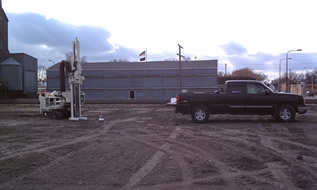Property Assessments: Phase I and Phase II
Phase I
 WHAT
WHAT
Phase I Environmental Site Assessments (ESAs) are non-sampling historical property-use investigations intended to define the presence and/or absence of a recognized environmental condition. The scope of Phase Is are typically standardized within the minimum standards outlined in ASTM E 1527-05.
WHY
Phase Is are typically completed prior to property transfer to satisfy the Innocent Landowner Defense (ILD) for Landowner Liability Protections (LLPs) provisions of CERCLA liability, whereas the landowner/purchaser had no reason to know contamination was present on a said property. The ILD concept has been in place since 1986, but following adoption of the Small Business Liability Relief and Brownsfield Revitalization Act signed by President Bush in 2002, the protections afforded landowners were standardized and improved.
Phase II
 WHAT
WHAT
Phase II Environmental Site Assessments (ESAs) typically involve sample collection and analysis. The scope of Phase IIs can be highly variable and follow general guidance outlined in ASTM E 1903.
WHY
Phase IIs are completed after a recognized environmental condition is identified, typically during a Phase I, or in cases where historic use is obvious. The goal of a Phase II is to determine whether there was a release associated with the identified recognized environmental condition. Information obtained during a Phase II property assessment allows sound business decisions to be made prior to property transfer.
ENVIRONMENTAL SCIENTIFIC COMMENTS
The need for a Phase II is usually a business decision, driven by the past and planned use of the property. The Phase II scope of work can vary significantly and is influenced by: past site use, environmental risks, documented presence and/or absence of contamination, planned future uses, and the comfort level of the client.

ENVIRONMENTAL SCIENTIFIC COMMENTS
The most common question received is “Do I need a Phase I or a Phase II, and what is the difference?”. In most cases, Phase I ESAs are completed on subject properties where a recognized environmental condition has not been documented. It is a detailed review of historic property use. In some cases, a Phase I may be unnecessary, while in other cases, the results of a Phase I may identify the need for a Phase II which includes on-site sampling. We understand the importance of completing only the amount of work required, within a tight schedule, and without sacrificing quality. Call us anytime for answers to your Phase I questions.